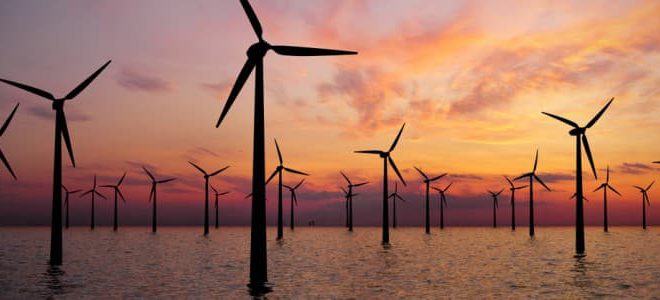Moves to unlock the full potential of Japan’s offshore wind industry are underway with the announcement of a task force set up to accelerate the sector’s development. Ambitions are to see the country’s renewables share increase from 16 percent to 24 percent by 2030 through a mixture of methods – hydropower being the most sizeable at 9.2 percent and wind coming in at 1.7 percent.
The International Energy Agency said last year that by 2040 offshore wind power alone has the potential to meet Japan’s total power demand by over ninefold and the world’s total electricity demand by elevenfold. Further development of floating turbines could become the world’s mainstay power supply.
Marubeni Corporation is preparing to launch Japan’s first large-scale offshore wind power generation business. Traditionally wind farms in Japan have been small-scale operations but this 100-billion-yen ($894.4m) project will see around 33 turbines at the ports in Akita and Noshiro and be operational by the end of 2022. The two wind farms will have a combined capacity of 140MW and will comprise wind turbines installed on bottom-fixed foundations, and onshore substations. Ultimately it’s hoped the electricity generated by the wind farm will support around 47,000 homes.
About 20-30 organizations are signing up, with the Japan Wind Association president Jin Kato proclaiming that 2020 will be ‘a turning point’ for the country’s offshore energy production. It follows last year’s legislation which permitted the first tenders to take place this year.
“This is an important project as it can serve as a template in the development of the sector going forward,” says Daniel Mallo, managing director and head of natural resources and infrastructure for Asia-Pacific at Societe Generale CIB, which acted as a senior lender in the transaction. “The project also demonstrates the spread of offshore wind farming is beginning to happen across the region.”
The barriers to driving the sector such as securing local consent for projects have been criticized by industry sources, who say it prevents them from achieving the potential that Japan has to offer. Yoshinori Ueda, a Japan Wind Energy Association board member said, “Taiwan decided to work on offshore wind after the Fukushima nuclear disaster and quickly surpassed Japan. Japan is slow. No other country spends as long as five years on environmental assessments. We are requesting that the government take a central role for spearheading offshore wind like in Europe, so that the private companies would only need to build turbines.”
The floating wind farm sector is expected to be worth between £32bn by 2030, and interest in developing the technologies is high. The Scottish Government recently funded a £1m competition, run by the Carbon Trust’s Floating Wind Joint Industry Project to kickstart work to commercialize the sector. One of the eight companies that shared the prize was Dublin Offshore. Its load reduction device sits partway up the mooring line and pivots in the water to reduce the movement of floating platforms during wave events. Director Darren Hayes told NCE: “Floating Offshore Wind allows new regions the opportunity to take advantage of the benefits of offshore wind energy and is on the cusp of enormous growth which will contribute significantly to the decarbonization of our energy system”.
 Iran Energy News Oil, Gas, Petrochemical and Energy Field Specialized Channel
Iran Energy News Oil, Gas, Petrochemical and Energy Field Specialized Channel




